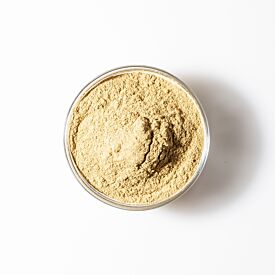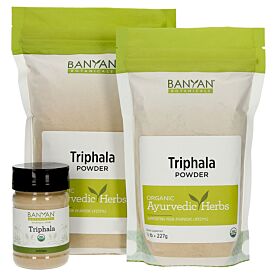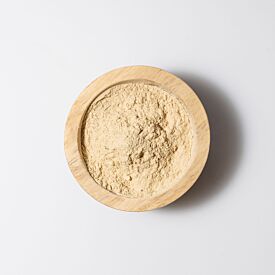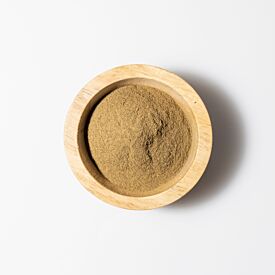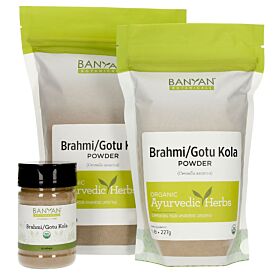An Ayurvedic Guide to Adrenal Health
Have you been told that you have adrenal fatigue? Or perhaps you are working with your healthcare provider(s) to track surpluses and insufficiencies in your hormone levels.
Abnormalities in our body chemistry can be deeply alarming and can leave us feeling rather out of step with ourselves, our sense of normalcy, as well as our overall health and well-being.
To make matters worse, there is a lot of conflicting information out there about how to address hormone imbalances—some of it contradictory—and finding your way through the maze of information can sometimes feel overwhelming.
Fear not. Ayurveda offers an incredibly insightful framework from which to understand disturbances in our adrenal glands (and endocrine systems overall), as well as hormone imbalances.
In essence, it’s about taking a step back to look at the broader context of our lives, and when it comes to adrenal health, stress, and hormone balance, this wide-angle view is absolutely indispensable.
Ultimately, we hope that this article provides you with a renewed sense of hope and direction in restoring balance.
What Are the Adrenal Glands, Anyway?
The adrenal glands are a pair of walnut-sized and roughly pyramid-shaped endocrine organs that rest atop the kidneys. They are perhaps best known for their secretion of familiar hormones (such as adrenaline and cortisol) associated with the body’s stress response.
The primary purpose of the adrenal glands is, indeed, to help us cope with stress in all its many forms. 1 But the adrenals actually do far more than that, and are, in fact, responsible for producing and secreting a wide range of hormones.
Consider this: as we age, the adrenal glands eventually become the primary source of sex hormones such as estrogen, progesterone, and testosterone in both men and women. 2
Remarkably, hormones travel everywhere in the body, so the adrenal glands influence literally every organ and tissue, as well as our mental and emotional experience. 3
It’s no surprise then, that when extra strain is placed on the adrenal glands, it can have a very real impact, not only on our capacity to cope with stress, but on our overall health and wellness.
What Are Hormones?
A hormone is essentially a chemical messenger in the body; it is secreted in one part of the body and carried by the blood to another part of the body where it elicits a specific response. Ultimately, hormones help regulate the behavior of every organ and tissue we have.
There are many different types of hormones, all with extremely particular jobs, but for our purposes here, a basic understanding of how hormones work will serve us best.
The plethora of hormones at work in the human body help carry out a diverse range of physiological functions—things like respiration, metabolism, growth and development, sensory perception, sleep, and, of course, the stress response.
At the same time, hormones serve as a complex system of checks and balances within the body and are instrumental in maintaining the level of equilibrium required to survive. Hormones are basically on and off switches for various physiological activities, and in this way, are rather dualistic. 4
As Dr. Claudia Welch explains in her book, Balance Your Hormones, Balance Your Life, “Whereas some hormones (like stress hormones) kick our bodies and minds into high gear, others (such as the dominant sex hormones, estrogen, and progesterone) lead us to calm our minds and slow down so that our bodies can replace depleted energy.”5
But perfect equilibrium is not guaranteed. This elaborate system of checks and balances can be thrown off by the way we choose to live, and when our bodies’ buffering systems become compromised, our overall health inevitably begins to decline.
At a most fundamental level, the activity of hormones in the body is strikingly aligned with the Ayurvedic principle that like increases like and that opposites balance. Human beings thrive in an astonishingly narrow range of internal norms known as homeostasis.
If opposing forces are needed to help maintain the proper equilibrium, and hormones are the agents of change used to move the system one way or another, then it becomes rather intuitive that preserving the body’s self-regulatory capacity is critically important to our health.
This is why hormones, and the endocrine glands that secrete them, are so worthy of our attention and care.
Signs and Symptoms of Adrenal Fatigue
When we are overly stressed, the adrenal glands have to work extra hard in order to make enough stress hormones to sustain a stressful way of life.
But they also have to balance the increased levels of adrenaline and cortisol in the bloodstream by ramping up their production of balancing hormones with opposing energies (such as estrogen, progesterone, and DHEA). 6 This exerts additional strain on the adrenal glands (and other endocrine organs, like the ovaries).
Eventually, as the endocrine system tires, our bodies simply can’t keep up with the demand, and we may begin to sense that something is off. The following are among the most common symptoms of adrenal imbalance:7
- High or Low Blood Pressure
- Cravings for Sugary or Salty Foods
- Weight Loss or Weight Gain
- Lack of Energy
- Inability to Slow Down
- Overwhelm or Anxiousness
- Moodiness
- Brain Fog
- Lack of Concentration
- Compromised Immunity
- Sleep Issues
- Low Libido
- Increased Perimenopausal or PMS Symptoms, in Women
Context Matters Most
While Ayurveda would never dismiss a hormone imbalance as insignificant, the Ayurvedic approach to balancing hormones is fundamentally different from that of modern allopathic medicine.
If you are facing an adrenal imbalance—or any kind of hormonal imbalance—you may have a lot of information swimming around in your mind, some of it distressing. You may be tracking clinical measurements of specific hormone levels in your bloodstream, whether they are too low or too high.
Sifting through an overwhelming amount of information about how to support your body can be overwhelming as you look for a balance. You may be asking yourself how your hormone levels got so out of whack, and whether or not you should take some form of hormone therapy.
And perhaps, underneath it all, is the clarity that you just want to feel well again. This is all understandable—and in no way wrong.
Modern medicine is very adept at isolating individual parts of the whole (a specific hormone in the bloodstream, for instance) and studying the ins and outs of its behavior.
Unfortunately, the allopathic approach can leave us overly focused on the clinical details, so much so that we lose sight of the broader ecology within which the imbalances arose in the first place.
The truth is that hormone issues of any kind are a symptom of a deeper, underlying imbalance. In other words, there is a reason that your adrenal glands or your hormone levels are off.
Understanding that certain glands are under- or over-producing is certainly a helpful starting place, and supplementing your system with more hormones may be a very useful transitional measure. But in the end, hormone therapy does very little to address the root cause of the problem.
We may be able to recover some level of balance and reduce the perceptibility of our symptoms, but the only truly restorative approach is to look beyond the symptoms and to address the underlying problem.
So we have to start asking ourselves what caused our systems to get so off-kilter in the first place. And we have to be willing to resolve the issue at its source.
The Problem: The Way We're Living
We’ve all heard it before. Stress has reached epidemic proportions in today’s fast-paced societies. And we now know that being over-extended and over-stressed is very harmful to our health.
Why? Because stress hormones activate an inherently depleting influence on bodily reserves, and chronic stress fundamentally interferes with the body’s nutritive capacities.8
But stress is a normal part of the human experience, and our physiological response to stress is actually well-adapted for the intermittent periods of crisis that humans have encountered throughout evolutionary history.
The trouble is that these days, our lives are chock-full of stressors, and our bodies have no way of discerning the difference between a real, life-threatening event and a perceived threat more indicative of modern life.
The stress response is identical in either case; both experiences set off the exact same cascade of stress hormones that, not long ago, would have been unleashed far less frequently by much more severe emergencies, such as the loss of a loved one, or a confrontation with a violent predator.
What’s more, the stress response is brilliantly designed to temporarily increase our sensitivity to danger. 9 That way, until the threat has passed, our bodies remain on high alert, ready to spring back into action at the first sign of trouble.
Throughout most of evolutionary history, the danger did pass, and our systems gradually returned to a normal state of equilibrium.
But for most of us today, this is no longer the case. Our stressors are so abundant that our bodies barely have time to navigate one “catastrophe” before they are faced with another.
The end result is that our systems are hyper-sensitized to danger—however real or imagined—and that with each successive crisis, our bodies pump more and more stress hormones into our bloodstreams to try to help us survive. 10
At first, glands like the adrenals work harder to try to make up the deficit, but over time, this is predictably unsustainable. As we have seen, the adrenal glands eventually grow tired. Unfortunately, this often happens even as our bodies continue to demand increasing levels of stress hormones.
Now, our physiology is understandably hard-wired to prioritize survival, so if the body is demanding more stress hormones than it can realistically produce, it will reallocate other bodily resources in order to keep up with demand.
Again, Dr. Claudia Welch: “If we run low on sex hormones or stress hormones or both, and there’s not enough raw material to make both, a choice must be made. And the body makes it: It prioritizes stress hormones.”11
When it comes to cholesterol-based hormones, this often means turning what should be nourishing, buffering hormones—like progesterone—into cortisol. 12 Let that sink in for a second.
Unfortunately, this reallocation of resources is not reversible. Once a progesterone hormone has been turned into cortisol, it cannot be turned back into progesterone—even after the threat has passed.
So if our lives are filled with chronic stress (even if our bodies are interpreting rather minor stressors as threatening), we tend to enter a self-reinforcing cycle and it becomes harder and harder to change course.
At this point, righting our body chemistry is much like using a garden hose to fill a kiddie pool that has large holes drilled all around its base.
The problem becomes less about the body’s ability to make hormones (the garden hose is still working), and more about how bodily resources are being allocated in order to keep up with the stressful lives we are living (we have to patch the holes in the pool).
In this scenario, hormone levels are inevitably thrown off and we descend into a downward spiral of whacked-out body chemistry. Then, as our nutritive capacities diminish, our reserves of health get sapped, and we start to feel lousy.
Among other things, we may experience dry skin, roughness in our joints, bone and muscle loss, infertility, sleep problems, a sharp decline in mental acuity, a myriad of digestive symptoms, as well as accelerated aging.
We find ourselves on a runaway train without a proper brake system in place, and even though our symptoms may be mild or even sub-clinical at first, we are now on a collision course with some sort of health crisis down the road—unless we can repair the body’s braking system and encourage a gradual return to equilibrium.
Thankfully, Ayurveda offers us a simple and intuitive path toward restoring the body’s built-in system of checks and balances so that we can, once again, begin to move in the direction of balance.
Because this approach addresses the root cause of the problem, it is rarely a quick fix, but it does give our bodies the best chance to fully recover.

The Solution
If stress is inherently depleting, and opposites balance, then the solution is to shower ourselves with building, nourishing, and rejuvenating foods, lifestyle practices, and herbs for adrenal support. To this end, the traditional Ayurvedic practice of rejuvenation, or rasayana, is generally very supportive.
It is also important to balance vata, which governs the nervous and endocrine systems and is invariably provoked by our fast-paced, stress-filled lives.
In essence, we’re looking for influences that are qualitatively heavy, grounding, nutritive, slow, unctuous, soft, and stabilizing (while reducing their opposites).
At its core, the Ayurvedic approach to balancing adrenal fatigue is really that simple. The rest of this article focuses on how exactly to invite these qualities into our lives while releasing accumulated stress and tension from the mind and tissues in order to promote a more easeful relationship with life.
Thankfully, Ayurveda offers a rich collection of simple recommendations that support this entire process.
Because Ayurveda is such an individualized approach to health, there is no substitute for the personalized guidance of a qualified Ayurvedic practitioner—especially if you are already experiencing symptoms that impact your quality of life.
Still, the following recommendations can be powerful allies as we attempt to reorient our systems and recover a healthier baseline.
Slow Down
When our systems are accustomed to a fast-paced, high-intensity lifestyle, slowing down can feel next to impossible. It is not. It does, however, require courage and a strong commitment to ourselves.
If it helps to think of this choice as a long-term commitment to your own health and well-being, then do, because it certainly is.
Here are some ideas as to where to begin:
Remove Known Stressors
Yes. There will always be stressors, and there will always be those that we do not see coming, and cannot entirely avoid. But if there are sources of stress in your life that you can reduce or eliminate entirely, do so.
From there, we can focus on changing our relationship with our stressors and training our bodies to respond to stress in healthier ways—especially those threats that are not true emergencies (more on that below).
Spend Time in Nature
The natural world embodies a rhythm distinctly different from that of the built environment. As a result, being in nature offers an effective antidote to the furious pace of our modern lives—one that is more aligned with our natural sensibilities.
Often, when we make time simply to be in the presence of the natural world, we can feel our systems dialing down and beginning to unwind—completely of their own accord.
This is incredibly valuable because it results in an internal sense of safety and ease while activating the parasympathetic nervous system—the body’s counterpoint to stress.
Make Time for What You Love
This may seem tangential, but our minds and our physiology are deeply fed when we engage in activities that feed us on a soulful level.
This is another way to help the body unwind, to begin to disassociate from the barrage of stressors that provoke the sympathetic nervous system (which activates the fight or flight response), and to encourage joy, ease, play, and meaning in our day-to-day lives.
Devoting at least some of our time to activities that nourish us helps upend the cycle of depletion and hyper-vigilance that characterizes a life of excess stress.
Prioritize Proper Sleep
Sleep is, in itself, a nourishing component of our lives. Proper sleep is deeply rejuvenating and serves to counter depleting energies in a very physical way.
Getting a good night's sleep is also incredibly important in helping us regulate our mental and emotional state, which has a direct impact on how we perceive and respond to stressful situations.
Give Yourself Permission to Do Nothing
We live in a culture so obsessed with being “productive” that many of us are absolutely averse to the idea of doing nothing. But it is one of the best ways to give our bodies permission to slow down and unwind.
Experiment with creating moments throughout your day—at least a couple of them—where you purposefully stop and do nothing.
Lie on the couch for a few minutes. Sit on a porch swing. Take a few deep belly breaths. Just watch the world go by for a while, or close your eyes if they need a break.
You might even experiment with taking a 20- or 30-minute “power nap.”
Quiet the Mind
While we cannot live a life completely free of potentially stressful situations, we can certainly change our capacity to cope with those challenges we do face.
At the core, the mind is incredibly important in influencing how we respond to perceived threats and moments of crisis. Ayurveda actually has quite a unique and expansive view of the channel of the mind.
For our purposes, it is important to understand that Ayurveda recommends a number of subtle yet powerful tools like yoga, pranayama, and meditation for repatterning our physiological response to adversity.
These practices serve to calm the nervous system, let go of accumulated tension, digest and release stagnant mental, emotional, and physical ama (toxins), and encourage fluidity and ease in our bodies—all while balancing hormone levels and countering excess stress.
The following are among Ayurveda’s most potent practices for supporting adrenal and hormonal imbalances.
Pranayama
Prana is the subtle essence of the life force that animates each of us. It infuses every cell and tissue throughout our bodies and is carried on and stimulated by the breath.
Pranayama is the yogic practice of working with the breath in ways that activate and move this life-force energy in specific ways while bathing our tissues in fresh prana. Pranayama helps restore fluidity and vitality to the subtle energy channels of the body while digesting and eliminating stagnation and ama.
When our adrenal glands are overtaxed and our hormones out of whack, the following pranayama practices can be transformative, especially when practiced for ten to fifteen minutes daily.
Nadi Shodhana. Nadi Shodhana (Alternate Nostril Breathing) means “channel cleansing” in Sanskrit. This pranayama activates, cleanses, and brings balance to the solar (masculine) and lunar (feminine) channels of the subtle body.
These channels are directly related to the same dualistic energies activated by different hormones in the body, so hormone imbalances almost always reflect an excess or deficiency in either solar or lunar energies—and sometimes both.
This practice also serves to clear accumulated tension, relieve stress, and support an improved mental disposition in the face of day-to-day stressors.
Bhramari. Also known as Humming Bee Breath, Bhramari Pranayama calms and quiets the mind, soothes the nerves, eases feelings of stress and anxiousness, dissipates anger, and releases cerebral tension.
It also stimulates the pineal and pituitary glands, which have a powerful influence on the entire endocrine system, and on hormone secretion throughout the body.
Bhramari also supports sound sleep, which can help ensure that the body’s natural rejuvenative cycles are functioning properly. Bhramari should not be practiced during pregnancy or menstruation.
Yoga
Yoga moves prana in the body, dissipates tension, clears stagnation, and encourages fluidity—both in the tissues as well as in the mental and emotional spheres.
Ayurveda offers a nuanced approach to yoga that specifically helps balance whichever doshas need the most attention in one’s system. You can take our dosha quiz to determine your current state of balance at any time.
Yoga routines centered on restorative and vata-balancing yoga are usually the most supportive when there is a history of excess stress or adrenal fatigue. Pitta-balancing yoga may also be appropriate when one’s life is characterized by excess work, ambition, and a strong will.
Meditation
Imagine if we could consistently witness the stressors in our lives with detachment and clarity, focusing on purposefully responding to them rather than blindly reacting all the time.
Meditation helps us develop this capacity through the cultivation of passive awareness and can inform a far healthier response to stressful situations.
It can even help us discern between real threats and those that are essentially a fabrication of the mind. Over time, a daily meditation practice can truly re-pattern the brain, helping to re-wire our response to challenging circumstances.
If you are new to meditation, Empty Bowl Meditation is a wonderful place to start. You might also consider joining a meditation group for a sense of guidance, community, and support in establishing a meaningful daily practice.

Commit to Quality Self-Care
Purposeful and devoted self-care is a commitment to self-love that can invoke profound healing. Maintaining a dedicated practice of self-care each day, regardless of what else might be going on in our lives, reaffirms, on a daily basis, our commitment to Self, to wellness, and to vibrant health.
Choosing to prioritize those things that truly nourish us can help us stay centered as we navigate the turbulence of the world around us.
In truth, there are countless ways to practice nurturing self-care. Below are a few especially supportive practices to consider. And remember, less is truly more when we are over-extended and over-stressed.
Start with just one or two new practices that you find most inspiring (even if they are not listed here). You can always build on this foundation as your system begins to respond to the restorative influence of your initial commitments.
Daily Routine
Most plants and animals are deeply attuned to the cycles of day and night, the seasons, and other patterns that direct the broader community of life.
Human physiology is actually very much adapted to—and supported by—some sense of regularity. This is why having a supportive daily routine is a cornerstone of the Ayurvedic lifestyle.
In truth, even a modest sense of routine gives our nervous systems a number of comforting and reassuring reference points throughout each day that send a resounding message to our bodies that all is well, and that we can be at ease.
Over time, this context of predictability and safety can encourage a profound physiological reorganization and activate deep rejuvenation throughout the mind and body.
Begin by creating consistency with simple things like when you wake, eat, and go to bed. If it is possible for you to maintain a consistent work or activity schedule, this can also be very helpful.
Adding self-care and mindfulness practices to this foundation will further enrich the level of support your routine offers you.
Oil Massage
Abhyanga, the ancient Ayurvedic practice of self-massage with oil, calms the nervous system, lubricates and rejuvenates the tissues, and promotes healthy circulation throughout the body. It is no coincidence that the Sanskrit word for oil, sneha, also means "love."
This extraordinarily rejuvenative practice benefits both the physical body and the more subtle realms of consciousness. In addition, the oil itself forms a protective sheath around the body that can help buffer the nervous and endocrine systems against stress.
In the morning, before a shower or bath, massage about 1/2 cup warm organic oil into the skin. This can be done daily, or just once or twice a week.
You can also simplify or supplement this practice by oiling the feet (and optionally, the scalp) with Brahmi or Sleep Easy Oil before bed. Wear old socks and, if you choose to oil your scalp, cover your pillow with a towel, in order to avoid staining your sheets with oil.
Nasya
Nasya is the practice of applying medicated oil to the nasal passages. Nasya oil is deeply penetrating, delivering potently balancing energies to the cerebral cortex. As a result, this practice calms the mind while soothing the tissues of the nasal passages.
It also promotes unobstructed breathing, relieves accumulated stress, and supports mental clarity. Nasya should not be performed by pregnant or menstruating women.
Each morning, apply three to five drops of Nasya Oil into each nostril. If you are new to the practice of nasya, please see our helpful instructional video.
Appropriate Exercise
When engaged appropriately, exercise can be a panacea for improved health.
While exercise itself may be characteristically depleting of bodily reserves, it also supports the body’s natural mechanisms of rejuvenation—things like sound sleep and the ability to relax—which help restore balance between the sympathetic and parasympathetic nervous systems.
Proper exercise can actually help counter the effects of excess stress by releasing accumulated tension, moving stagnant mental and emotional energy, and improving circulation.
It also kindles agni (the metabolic fire), improves digestion, bolsters the body’s natural detoxification mechanisms, and encourages proper elimination—all of which are essential to optimal health.
Ayurveda offers the unique perspective that the type, duration, and intensity of exercise that is most balancing for each of us depends largely on one’s constitution and current state of balance.
In general, Ayurveda suggests that we exercise to only about 50 percent of our capacity—until we break a mild sweat on the forehead, under the arms, and along the spine, or until the first sign of dryness in the mouth. 13
In cases of adrenal fatigue and hormone imbalance due to excess stress, a vata-balancing exercise routine that is gently paced and organized around calming, grounding activities (like chi-gong, tai-chi, vata-balancing yoga, and walking) is usually best at first.
You can also try breathing through the nostrils for the duration of your workout and commit to listening intently to what your body needs.
When the endocrine system is over-taxed, excessively intense or prolonged exercise can mimic stress, so err on the side of doing less rather than more, and take plenty of time to rest and rejuvenate afterward.
If you are not currently exercising regularly, keep in mind that a supportive exercise program does not have to be complex or time-intensive.
A daily 20-minute walk can do wonders for the entire system—body, mind, and spirit.
Eat Real Food
The idea of limiting one’s diet is overwhelming for many of us, but when it comes to supporting the body in recovering from chronic stress, hormone imbalance, or adrenal fatigue, just a few simple dietary guidelines can make a world of difference.
These conditions tend to leave us physiologically depleted, and eating real food can provide a crucial source of nourishment and rejuvenation.
Focus on eating healthy, whole foods. Minimize processed foods, stimulants such as caffeine or nicotine, and refined sugars—keeping in mind that these are all foods that we tend to reach for when time is short and our bodies are low on energy, so this may require a bit of focused commitment at first.
Instead, favor simple, wholesome, grounding meals like soups, stews, and root vegetables, and err on the side of eating a vata-balancing diet with plenty of vata-balancing foods.
If you don’t have a lot of time to cook for yourself, Asian restaurants and the prepared foods section of many health food stores often have a number of supportive choices.
It is also important to eat with mindfulness. In Ayurveda, eating is considered a sacred act, an act of love. Ideally, it is done in a calm, peaceful atmosphere rather than eating on the go, while working at your desk, or when distracted by intense conversations, television, or multi-tasking of any kind.
If we want our food to be a source of strength and rejuvenation, it is important to give the act of eating our full, undivided attention.
Do your best to eat slowly, chew thoroughly, and fully appreciate the tastes and textures of each meal. Cultivating gratitude while eating, and even setting an intention to receive your meal as a life-giving, nourishing gift to your body, can bolster the nutritive impact of your meals.
Employ Herbal Allies
Ayurveda also reveres a number of herbs for energy. These herbs are known to deeply nourish the body, support the endocrine system, and help us reclaim optimal health when depleted.
Ashwagandha
Ashwagandha is a highly regarded adaptogen that has long been celebrated for its capacity to support the nervous system in restoring a sense of equilibrium—especially when it has been overtaxed, undernourished, or especially stressed.
Ashwagandha encourages quality energy throughout the day, sound sleep at night, and fosters a calm mind and physiology. Ashwagandha tablets and liquid extract are also available.
Brahmi/Gotu Kola
Brahmi/Gotu Kola is incredibly sattvic in nature and is renowned for its ability to balance the nervous system and the mind. It is a cooling, relaxing tonic for pitta, and it helps calm vata in the mind.
Mixed Herbal Formulas
There are also a number of mixed herbal formulas that include one or both of these powerful herbal allies, alongside other supportive herbs:
Adrenal Nourish tablets blend powerful adaptogens, including ashwagandha and brahmi/gotu kola, to create a deeply supportive formula for the adrenals.
These tablets were specifically designed to ease some of the burdens that fall to the adrenal glands, like supporting the body's reaction to stress and promoting natural energy levels. This formula is also nourishing for the nervous system, endocrine system, and mind.
7-Herb Energy is a liquid extract that nourishes prana and offers a natural source of energy and alertness without caffeine or stimulants. Balancing the demands of work, family, and a healthy, active lifestyle can be challenging—even for those of us who strive to follow the principles of Ayurveda.
This formula was actually created to support the Banyan team through the inevitable periods of fatigue and stress we all face. It contains both ashwagandha and brahmi/gotu kola.
Mental Clarity tablets offer deep support to both the brain and the nervous system. This formula helps calm the nerves while encouraging concentration, intelligence, mental health, and emotional stability.
These tablets contain brahmi/gotu kola, ashwagandha, and a number of other herbs that are profoundly supportive of the mind.
Stress Ease tablets offer strength, resiliency, and tone to the neuromuscular system, helping the body to better cope with stress. This blend of potent herbs introduces rejuvenative qualities that buffer the body against weakness, fatigue, and overwhelm.
In addition to helping us face physical, mental, and emotional challenges alike, they also support the maintenance of a consistent energy level. This formula contains both ashwagandha and brahmi/gotu kola.
Chyavanprash is a traditional Ayurvedic herbal jam made in a base of amalaki fruit. This balancing formula is highly rejuvenative, kindles agni without aggravating pitta, and actually helps clear excess heat and intensity from the system. A daily dose of this nutritive jam can support deep nourishment of the tissues, alongside improved emotional stability, energy, vitality, and overall well-being.
If you feel overwhelmed by these options and are asking yourself, "Which one product is best to start with?", we recommend trying Adrenal Nourish to support your overall adrenal health. You can also seek the guidance of an Ayurvedic practitioner to determine an herbal protocol that is right for you.
You Know You Best
At the end of the day, reclaiming our health is a matter of taking a stand for ourselves and committing to the deep self-care required to return to balance.
In cases of excess stress, adrenal fatigue, and hormone imbalance, this often means doing less, and creating firm boundaries—both by saying “no” to those things that are too much and by saying “yes” to our own rejuvenation.
Ultimately, you know which aspects of your life are most taxing to you, and which areas could be expanded to nourish your body, mind, and spirit. But start small; taking on too much from the outset will be counter-productive.
Develop some sense of routine. Take time for yourself every day. And consider implementing a daily practice of quieting the mind for at least fifteen minutes.
From there, follow your heart’s impulses. Sometimes, a practice of deep listening is an important starting place as we learn to hear and honor our most authentic desires.
But trust yourself; your truest inner voice will rarely lead you astray.





